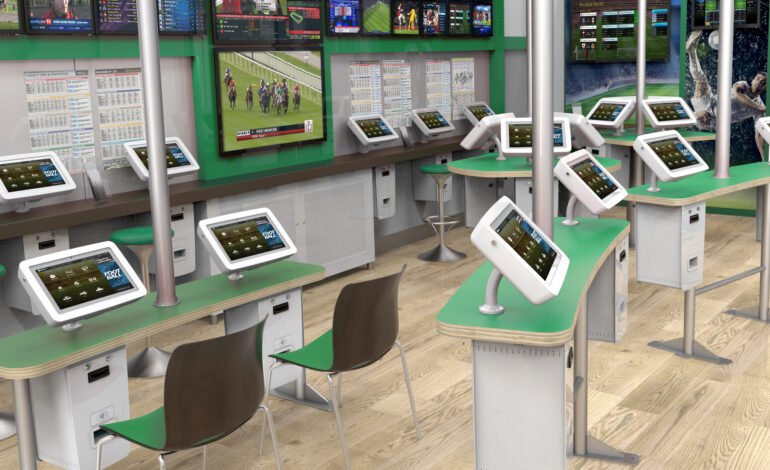
How Technology Has Transformed the Gaming Industry
In 2018, global gaming sales soared past $125 billion, showcasing the massive impact of technology on our gaming experiences. This growth highlights how our needs, wants, and preferences in the gaming world have evolved, especially in board and video games.
Games are activities we engage in for fun, boosting brain function, honing cognitive skills, and releasing serotonin, the “happy” chemical. With advancements in technology, the thrill of gaming has only intensified, offering more visual stimulation, creativity, and satisfaction.
From the ancient Egyptian board game Senet, dating back to 3100 BC, to today’s virtual gaming environments with facial recognition and gesture control, technology has radically reshaped how we play games. Examining the history of gaming and its various platforms reveals just how profoundly technology has influenced this pastime.
A Timeline of Gaming Evolution
- 3500 BC: Board games, like Senet, were popular across many cultures. This game was first found in the Predynastic and First Dynasty burials of Egypt.
- 17th Century: Popular games included draughts and card games, although the Pilgrims and Puritans of New England were not fans.
- 1843: The shift from agrarian to urban living increased leisure time. The US’s earliest published board game, ‘The Mansion of Happiness,’ was based on Christian morality.
- 19th Century: Board games became commercially produced, thanks to advancements in paper, printmaking, and chromolithography, allowing vibrant colors for card and board games.
- 1902: Monopoly, originally known as ‘The Landlord’s Game,’ was created by American Elizabeth Magie. This marked the beginning of significant growth in the board game industry.
- 1937: The first electronic digital computer was built, laying the groundwork for future gaming advancements. By 1950, computer scientists began developing simple games for research purposes.
- 1970: The first video game, ‘Computer Space’ by Nutting Associates, debuted. In 1972, Pong was released, and coin-operated arcade games became a hit.
- 1975: Computer-based games like ‘The Dungeon’ and ‘Avatar’ in 1979 allowed multiplayer battles against monsters.
- 1976-1982: Video games thrived in arcades, and second-generation consoles, such as the ‘Intellivision,’ were introduced for home use. By 1982, US video game sales reached $2.1 billion, highlighting the industry’s potential.
- 1980s: Home computers with built-in games and floppy disks made games portable. The internet’s expansion led to dial-up bulletin board systems for online gaming. Handheld LCD games, particularly by Nintendo, sparked a surge in portable gaming, while board game makers adapted their games for video and computer formats.
- 1990s: Arcades declined as computer games gained popularity, featuring better graphics, multimedia capabilities with sound cards and CD-ROMs. Fourth and fifth-generation consoles were released.
- 1997-2000: Mobile phones hit the market, with Nokia’s Snake becoming a hit. As console, PC, and mobile innovations emerged, the gaming market diversified. Board game sales continued to rise until 1999, defying predictions of decline.
- 2000-2011: Mobile gaming exploded with the introduction of mobile game apps, causing board game sales to drop. By 2011, physical and digital online games, including those on mobiles and social media, were worth $5.9 billion, compared to $2.03 billion for console and PC games, despite the launch of sixth and seventh-generation consoles.
- 2012-2016: Virtual Reality (VR) gained popularity, thanks to advancements in computer, graphics, video, and camera technology, although VR development began in the 1950s.
The Impact of Mobiles & Apps on Gaming
From 2016 onward, the mobile app gaming market grew faster than any other segment, reaching an expected value of $72.3 billion in 2020. Mobiles and tablets have reshaped various industries, including gaming. By 2025, 50% of gaming will take place on mobile and tablet devices. With more people gaming from home, businesses face the challenge of delivering a core, profitable entertainment experience.
Gaming and the Entertainment Industry
Arcades and leisure spots struggle to attract customers due to the convenience of mobile gaming. Entertainment tablet kiosks offer a cost-effective, secure solution to bring mobile gaming indoors. These kiosks are not just popular in gaming-focused venues but are becoming a trend in restaurants and other businesses targeting younger audiences. For instance, McDonald’s is transforming its restaurants by integrating tablet kiosks with Samsung tablets, featuring gaming and social media apps to boost foot traffic, customer retention, and meet the expectations of tech-savvy patrons.
imageHOLDERS recently provided McDonald’s with custom-designed kiosks that blend seamlessly with modern restaurant interiors. These adaptable kiosks can incorporate advancements in tablet technology, whether they expand or shrink, encouraging guests to use the restaurant as an entertainment hub, thereby increasing dwell time and sales opportunities.
How imageHOLDERS Can Assist
imageHOLDERS offers comprehensive kiosk solutions, from consultancy and manufacturing to installation and software support. Contact us about our custom tablet kiosks with device integration or simple iPad enclosures. Call us at 01202 892 863 (UK) or +1 877 450 2172 (US), or






